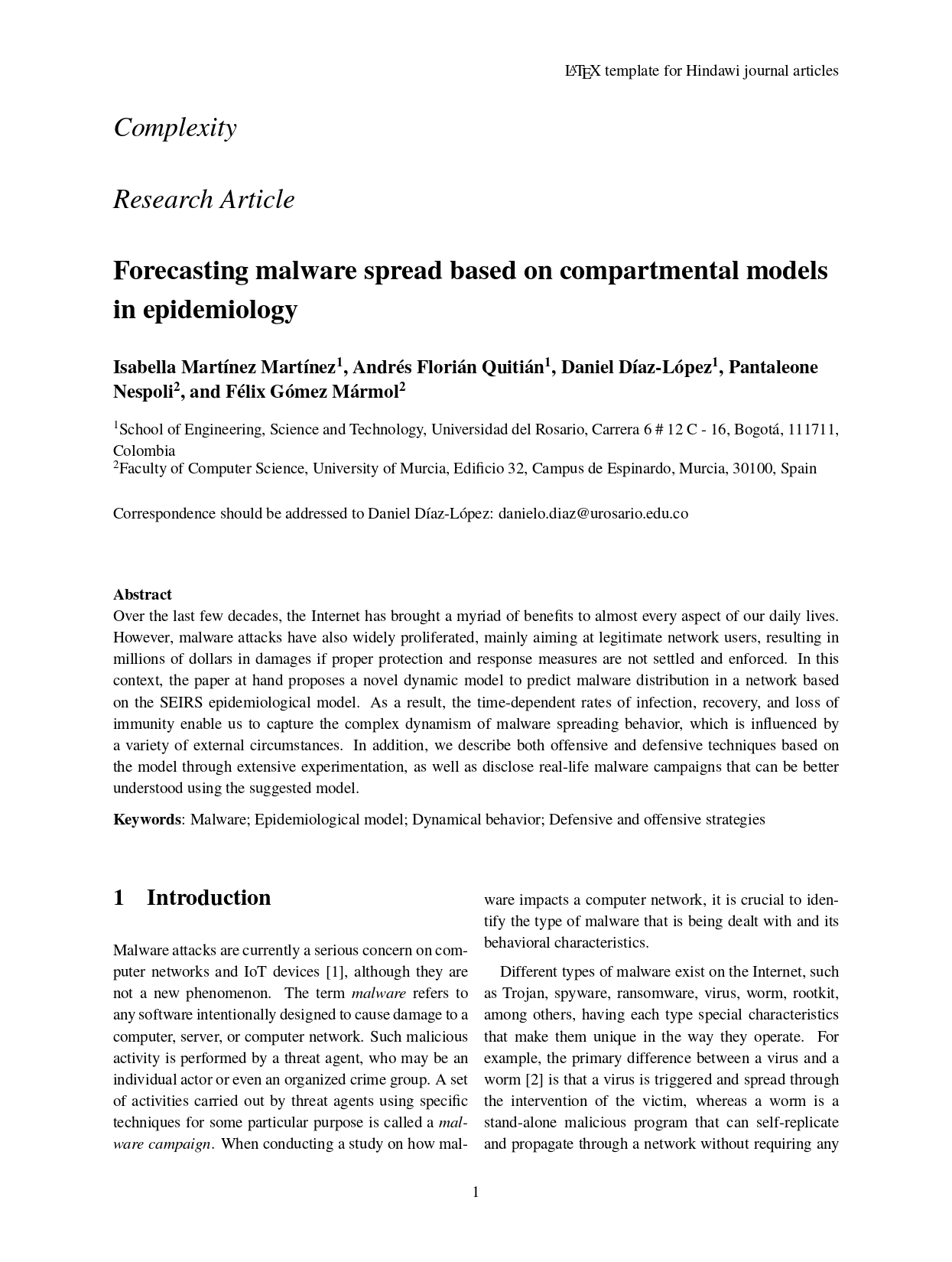Over the last few decades, the Internet has brought a myriad of benefits to almost every aspect of our daily lives. However, malware attacks have also widely proliferated, mainly aiming at legitimate network users, resulting in millions of dollars in damages if proper protection and response measures are not settled and enforced. In this context, the paper at hand proposes a novel dynamic model to predict malware distribution in a network based on the SEIRS epidemiological model. As a result, the time-dependent rates of infection, recovery, and loss of immunity enable us to capture the complex dynamism of malware spreading behavior, which is influenced by a variety of external circumstances. In addition, we describe both offensive and defensive techniques based on the model through extensive experimentation, as well as disclose real-life malware campaigns that can be better understood using the suggested model.
MalSEIRS: Forecasting malware spread based on compartmental models in epidemiology
Abstract
Related Publications
Co-Authors
This work would not have been possible without the inestimable contribution of:
- Isabella Martínez Martínez
- Andrés Florián Quitián
- Daniel O. Díaz López
- Pantaleone Nespoli
Citation
Isabella Martínez Martínez, Andrés Florián Quitián, Daniel O. Díaz López, Pantaleone Nespoli, Félix Gómez Mármol, «MalSEIRS: Forecasting malware spread based on compartmental models in epidemiology«, Special Issue on Modeling and Propagation Dynamics Analysis of Complex Networks, Complexity, vol. 2021, no. 5415724, pp. 1-19, 2021
Journal Ranking & Impact Factor
- Journal: Complexity
- Category: Mathematics, Interdisciplinary Applications
- Rank: 43/108
- Quartile: Q2
- Impact Factor: 2.121






